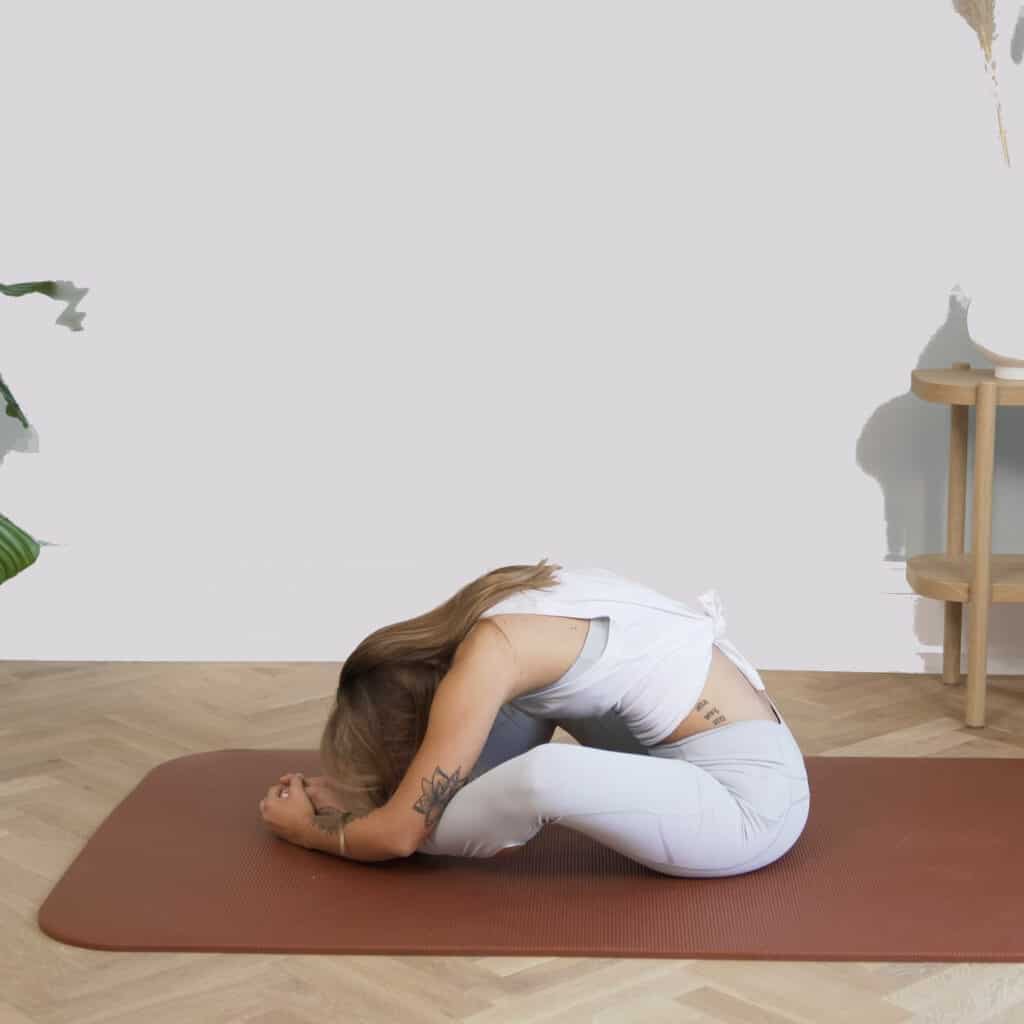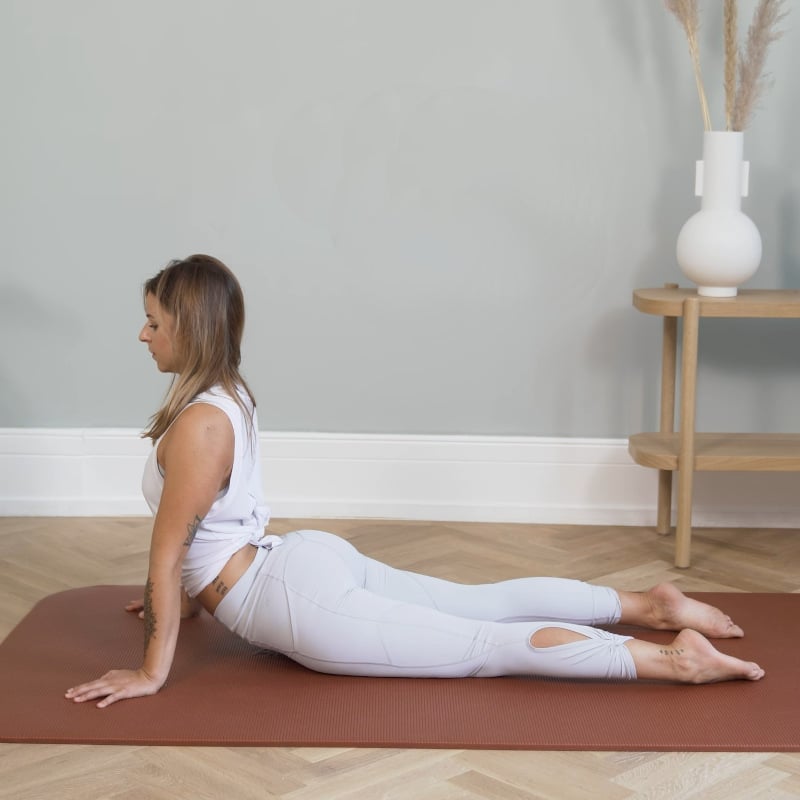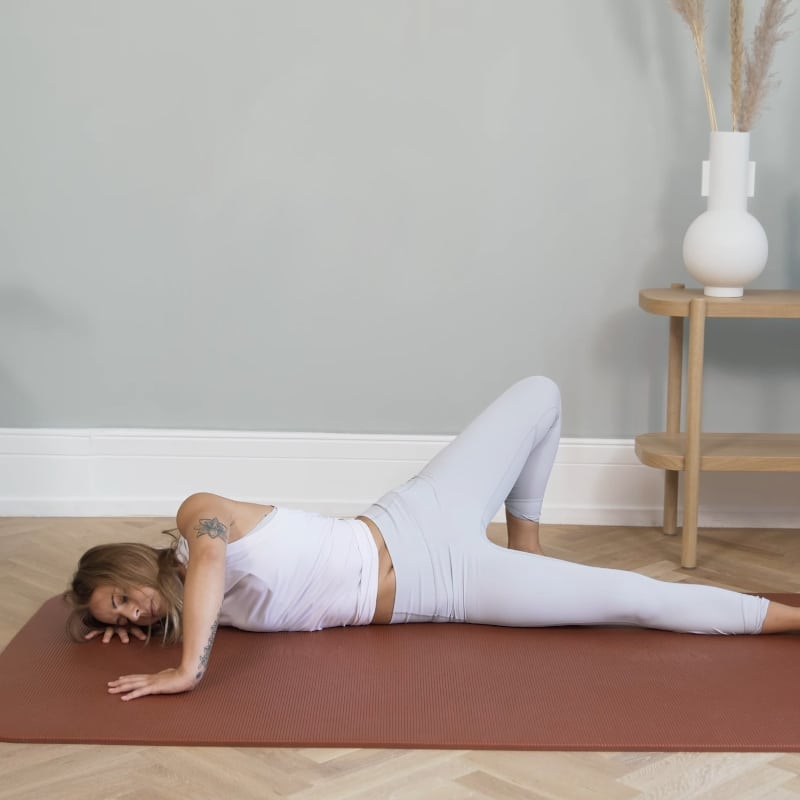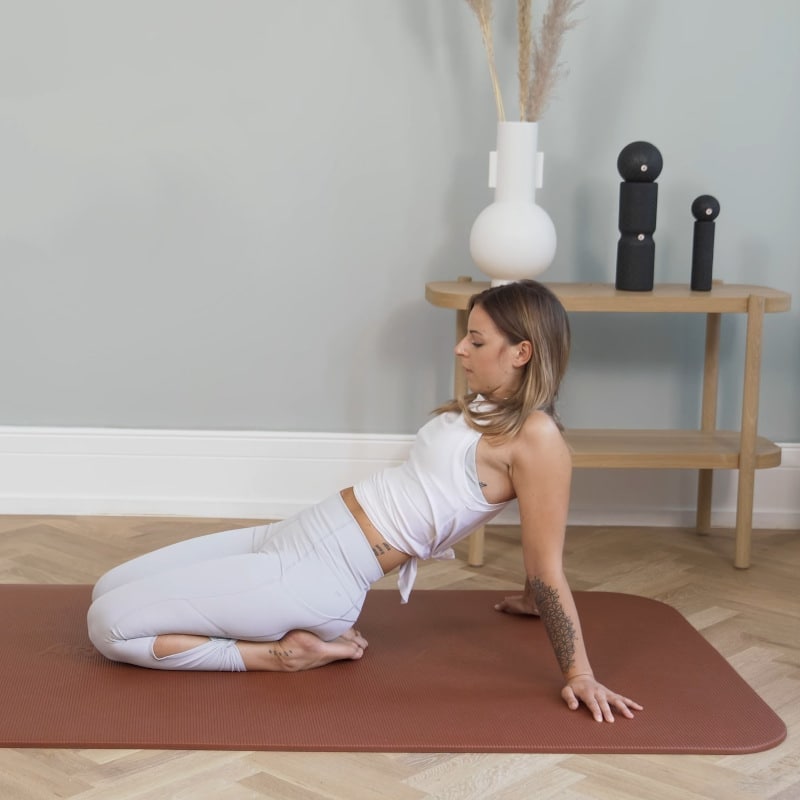Fibromyalgia exercises
Body Part:
Full Body
Equipment:
None
Level:
Beginner
Body Part:
Full Body
Equipment:
None
Level:
Beginner
Fibromyalgia is a chronic condition that causes widespread body pain. Anyone can develop fibromyalgia, including children, but the condition is more common in women than it is in men. People commonly develop fibromyalgia between the ages of 30 and 60. It is estimated that the condition is present in between 2% and 8% of the population. 1)
Currently, there is no cure for fibromyalgia, but the symptoms can be managed through lifestyle changes. One of the best ways to manage symptoms is through physical activity. We’ve developed a 12-minute full-body stretching routine that can help ease the pain and increase your physical fitness.
Keep reading to learn more about fibromyalgia, or scroll down to begin exercising with our easy-to-follow video. You’ll find step-by-step exercise instructions towards the end of this article.
The most distinctive symptom of fibromyalgia is chronic pain that can affect the muscles, joints, bones, ligaments, and tendons anywhere in the body. Fibromyalgia pain can range from a dull ache to unbearable agony. Some people with fibromyalgia experience bouts of intense pain and then nothing for a period of time. Additional symptoms of fibromyalgia include difficulty sleeping or not feeling rested after sleep, headaches or migraines, a feeling of numbness or tingling in the hands or feet, memory problems, difficulty focusing, depression, and anxiety.
Although the exact cause of fibromyalgia is unknown, it is thought to be caused by the nervous system overreacting to pain signals. Fibromyalgia has been linked to other chronic conditions like rheumatoid arthritis, lupus, sarcoidosis (a rare inflammatory condition that most commonly affects the lungs and lymph glands), and chronic fatigue syndrome. Fibromyalgia may be triggered by excessive stress, physical or emotional trauma (like post-traumatic stress disorder), depression, or anxiety. You may be at risk to develop fibromyalgia if someone in your family has the condition.

Sign up for our free newsletter and discover how to manage your pain yourself. Every two weeks, we’ll deliver follow-along videos and articles to your inbox.


You might feel a little pressure in your lower back, but you shouldn’t feel any pain. If you do feel back pain, lay on your back and lift it off the floor. Hold the position until the pain goes away.
Alternative: If you find this position too challenging, place your arms on the couch.

Alternative: If you find this stretch too challenging, keep your right foot in front of your left knee, turn onto your side only as far as feels comfortable, and hold the position.

If you find this position too challenging, place a pillow between your buttocks and feet.
If you are very flexible, try leaning all the way down until your upper back is on the floor. Make sure your knees stay together and on the floor.

If performed regularly, our fibromyalgia exercises can help reduce stress and improve your symptoms. We suggest performing our routine 6 days a week, leaving one day for rest.

Sign up for our free newsletter and discover how to manage your pain yourself. Every two weeks, we’ll deliver follow-along videos and articles to your inbox.
Then we would be happy if you shared it with your friends: